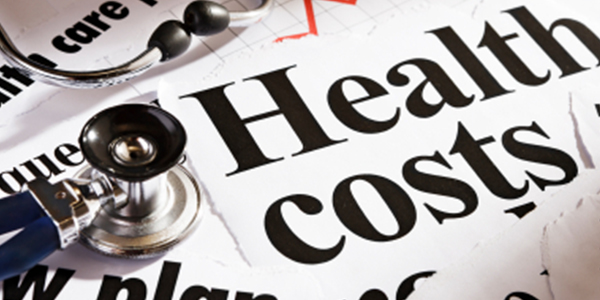Health Insurance Premium Growth Could ... FINALLY ... Slow in 2017

The cost of health insurance is higher than ever. But will it get even more expensive in 2017?
That’s where we have some good news. Our analysis suggests premium growth could finally slow, potentially by a lot. That’s because the data shows a growing difference between what insurers are taking in as premiums, and what they’re paying out in benefits.
In Q3 2016, on average, Americans paid $152 billion in health insurance premiums across all types of insurance coverage. In return, health insurance companies spent an average of $132 billion to provide health care services.
That’s a 13.2 percent profit margin. It is somewhat in line with the Medical Loss Ratio, which mandates that health insurers should spend no less than 80 percent to 85 percent of premiums earned on providing healthcare services. This rule ensures that insurance companies are not pocketing too much profit.
It’s how those figures fit into the longer-term trend that leads us to believe consumers will get some relief soon. Let us explain:
Our analysis of nearly eight years of quarterly financial statements ... filed by over 1,000 health insurers ... indicates a steady increase in the amount Americans pay for their coverage. You can see this by looking at trends in premiums paid and expenses incurred across three different coverage categories: Group and Individual consumers, Federal Employees, and Medicaid.
The graph below indicates that, on average, there were no double-digit percentage increases in premiums paid by these three groups since 2009. But premiums did rise substantially in 2014, when health insurance became mandatory under the Affordable Care Act. That’s also when we did finally see an increase top the double-digit mark — 12.2 percent for group and individual coverage.

Then in 2015, group and individual insurance providers faced a financial squeeze: Premiums collected increased by 3.4 percent, while the cost of providing health services rose by 7.7 percent. In other words, costs rose more than twice as much as premiums, suggesting that many insurers suffered losses for this type of coverage.
But last year, through Q3 2016, our data indicates that insurers received a greater increase in premiums (+3 percent) then they saw on the cost side (+0.5 percent). This suggests that the companies have a bit of extra cash after experiencing a better year. This could lead to smaller rate increases ... or even flat rates ... in 2017 as insurers try to level their expenses and premiums collected to meet the medical loss ratio rule.

Bottom line: Based on the data trends, and health care reform promises from the new administration, 2017 could finally be the year we don’t see major healthcare insurance premium hikes. That would be welcome relief for many Americans.
Regardless of what happens with pricing, make sure to check out the safety rating of any health insurer you use at our Weiss Ratings website.
